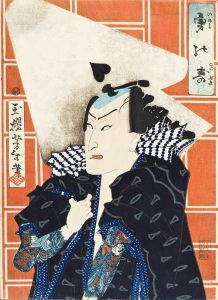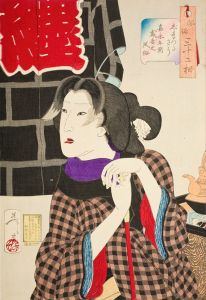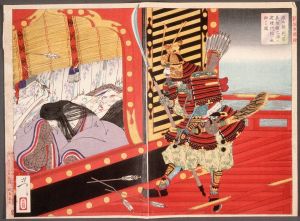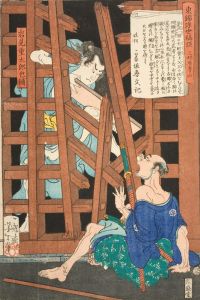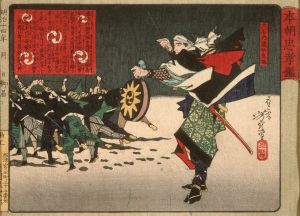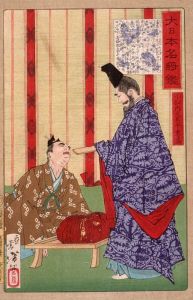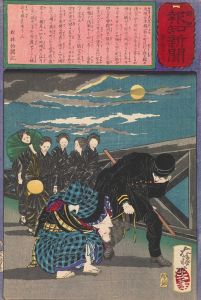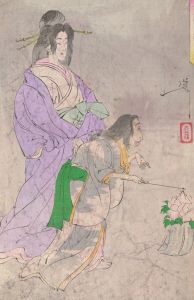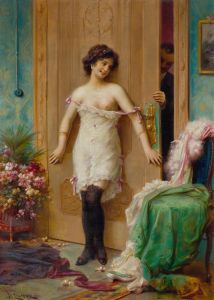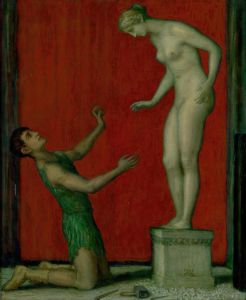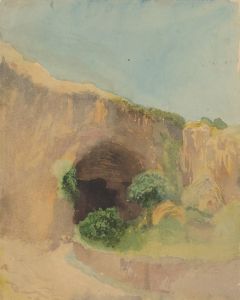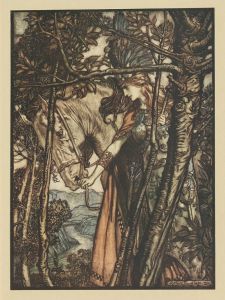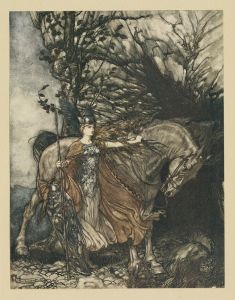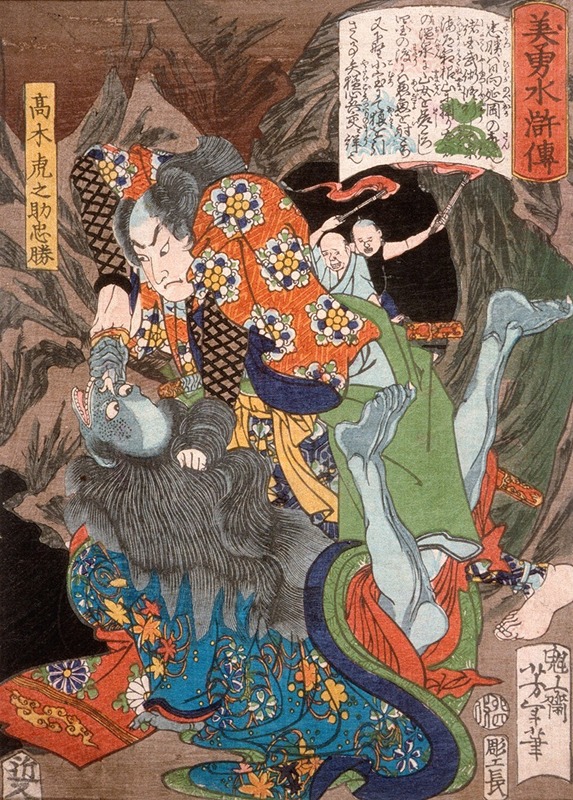
Takagi Toranosuke Tadakatsu Slaying a Demon in a Cave
A hand-painted replica of Tsukioka Yoshitoshi’s masterpiece Takagi Toranosuke Tadakatsu Slaying a Demon in a Cave, meticulously crafted by professional artists to capture the true essence of the original. Each piece is created with museum-quality canvas and rare mineral pigments, carefully painted by experienced artists with delicate brushstrokes and rich, layered colors to perfectly recreate the texture of the original artwork. Unlike machine-printed reproductions, this hand-painted version brings the painting to life, infused with the artist’s emotions and skill in every stroke. Whether for personal collection or home decoration, it instantly elevates the artistic atmosphere of any space.
"Takagi Toranosuke Tadakatsu Slaying a Demon in a Cave" is a woodblock print created by the renowned Japanese artist Tsukioka Yoshitoshi. Yoshitoshi, who lived from 1839 to 1892, is celebrated as one of the last great masters of the ukiyo-e genre of woodblock printing and painting. His works are known for their dynamic compositions, innovative use of color, and often dramatic subject matter, reflecting both traditional Japanese themes and the changing world of the Meiji era.
This particular print is part of Yoshitoshi's series "New Forms of Thirty-Six Ghosts" (Shinkei Sanjūrokkaisen), which was published between 1889 and 1892. The series is notable for its exploration of supernatural themes, drawing on Japanese folklore, mythology, and historical tales. Each print in the series depicts a scene involving ghosts, demons, or other supernatural entities, often featuring historical or legendary figures.
In "Takagi Toranosuke Tadakatsu Slaying a Demon in a Cave," Yoshitoshi illustrates a dramatic encounter between the samurai Takagi Toranosuke Tadakatsu and a demon. The scene is set within a dark, foreboding cave, enhancing the tension and mystery of the confrontation. The composition is dynamic, capturing the moment of action as Tadakatsu, wielding a sword, confronts the demon. The demon is depicted with exaggerated, fearsome features, a common stylistic choice in Japanese art to convey the otherworldly and terrifying nature of such creatures.
Yoshitoshi's use of color and line work in this print is exemplary of his mature style. The contrast between the dark interior of the cave and the vibrant colors of the figures heightens the drama of the scene. The detailed rendering of the characters' expressions and movements showcases Yoshitoshi's skill in conveying emotion and narrative through visual art.
The historical and cultural context of this print is rooted in the rich tradition of Japanese storytelling, where samurai and supernatural beings often intersect. Such tales were popular in the Edo period and continued to captivate audiences in the Meiji era, when Yoshitoshi was active. His work reflects a period of transition in Japan, where traditional themes were being reinterpreted in light of modern influences.
Yoshitoshi's "New Forms of Thirty-Six Ghosts" series, including this print, is considered a significant contribution to the ukiyo-e genre, marking a bridge between the traditional and the modern. His ability to blend historical and supernatural elements with innovative artistic techniques has left a lasting impact on Japanese art.
Overall, "Takagi Toranosuke Tadakatsu Slaying a Demon in a Cave" exemplifies Yoshitoshi's mastery of the woodblock print medium and his deep engagement with the cultural narratives of his time. The print remains a valuable piece for both its artistic merit and its reflection of the cultural and historical milieu of late 19th-century Japan.





